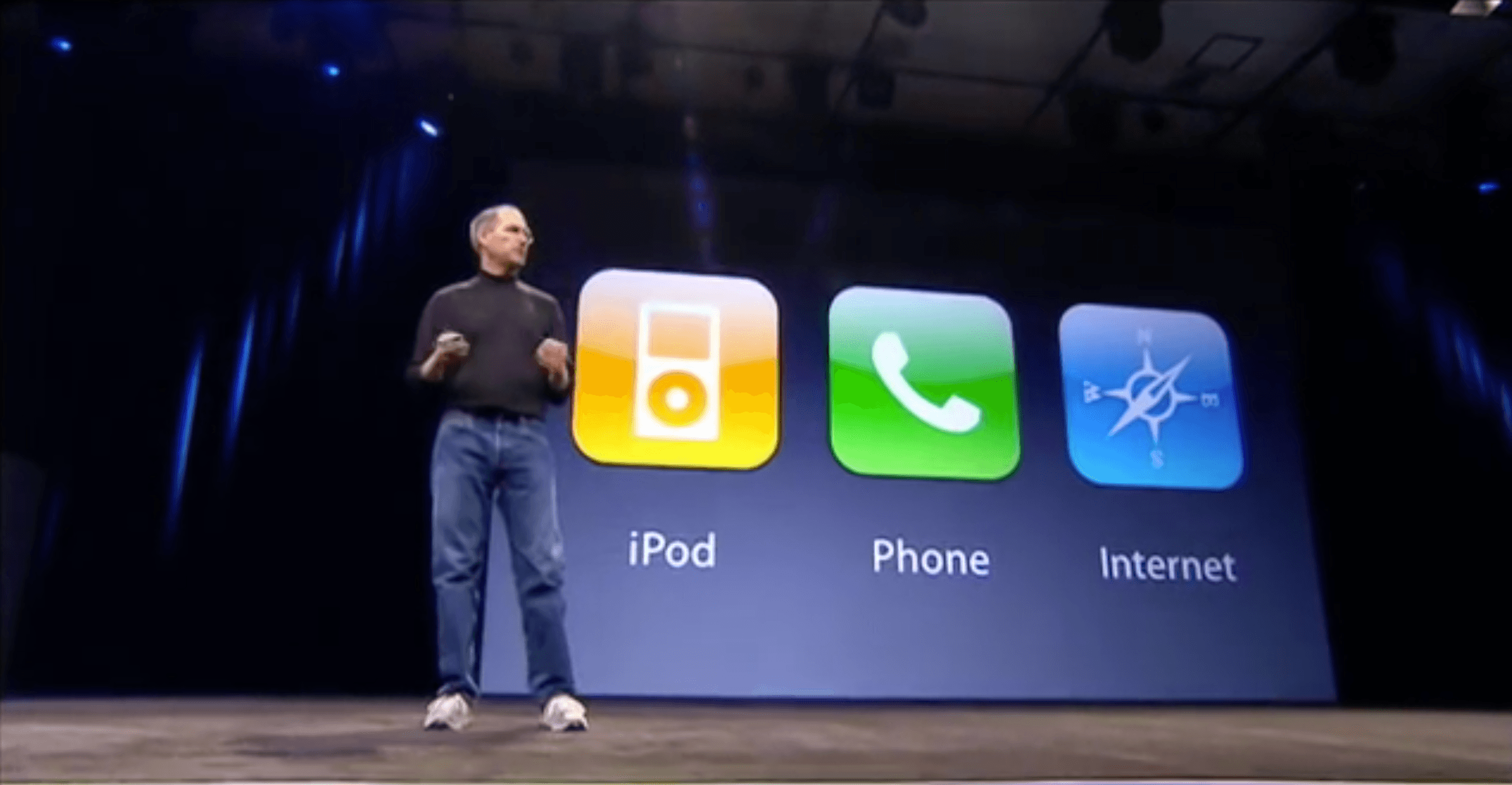Steve Jobs’ introduction of the iPhone to the world 10 years ago was captivating:
today, we’re introducing three revolutionary products…. The first one: is a widescreen iPod with touch controls. The second: is a revolutionary mobile phone. And the third is a breakthrough Internet communications device.
So, three things: a widescreen iPod with touch controls; a revolutionary mobile phone; and a breakthrough Internet communications device. An iPod, a phone, and an Internet communicator. An iPod, a phone … are you getting it? These are not three separate devices, this is one device, and we are calling it iPhone.
In retrospect, it’s hard to believe just how cobbled together and buggy that demo iPhone was:
Only about a hundred iPhones even existed, all of them of varying quality. Some had noticeable gaps between the screen and the plastic edge; others had scuff marks on the screen. And the software that ran the phone was full of bugs.
Despite the unfinished state of the iPhone, the onstage demonstrations at Macworld Expo went smoothly. Jobs told the cheering crowd that the iPhone would be available in six months’ time in 4 and 8 GB models for $499 and $599 on a sole US carrier, Cingular. Jobs also revealed something that would have a much bigger impact on the iPhone’s long-term success: its operating system was built on a foundation of Mac OS X.
Almost immediately, OS X developers began clamoring for a way to create apps for the iPhone. At WWDC in June 2007, less than three weeks before the iPhone’s launch, Steve Jobs announced what he called a ‘very sweet solution’ – developers could build web apps for the iPhone. The idea wasn’t well-received. Developers took matters into their own hands: a vibrant jailbreaking community emerged that gave rise to native apps like Twitterrific.
Just four months later, an official iPhone SDK was announced by Steve Jobs. There weren’t many details, but in March 2008 the iPhone SDK was released. Developers dug in and built hundreds of apps, a comically small number by today’s standards. When the App Store opened its doors that October with 500 apps, an entirely new revolution was sparked – an app economy that helped drive iPhone sales to even greater heights. The iPhone and App Store have been inextricably linked ever since.
In the ensuing years, the iPhone and the App Store ecosystem surrounding it have grown larger than anyone could have imagined. Today, there are over 2.2 million apps in the App Store, which generated over $20 billion in 2016. With so many apps, it’s hard to find what will suit your needs, which is why MacStories has reviewed thousands of apps over the years.
As we think about what might be next for the iPhone, it’s interesting to look back at where it all started, and consider just how much the iPhone has evolved. To commemorate the tenth anniversary of its introduction, we’ve collected some of our favorite MacStories articles about the iPhone:
- Why A New iPhone In September Makes Sense (April 21, 2011)
- iPhone 4S: An Interplay of Hardware and Software (October 5, 2011)
- Five (July 1, 2012)
- The iPhone 5’s Exclusive Feature: A Better Experience (September 12, 2012)
- Mapping Apple’s International iPhone & iPad Rollouts (January 8, 2013)
- The Invisible Interplay (September 10, 2013)
- Essential (June 24, 2014)
- Life After Cancer: How the iPhone Helped Me Achieve a Healthier Lifestyle (March 3, 2015)
- iPhone 6 Plus Review (April 14, 2015)
- Visualizing Apple’s Historical iPhone Lineups, Guessing the Next One (August 11, 2015)
- How the 6s Plus Is Reshaping My iPhone Experience (October 26, 2015)
- “Where’s the App for That?” – Fixing App Store Discovery (June 2, 2016)
- iPhone 7: Computer from the Future (October 10, 2016)
When Steve Jobs unveiled the iPhone, it was clear that it was different. Just how different only came into focus with the passage of time. The iPhone fundamentally altered computing for millions of people. That sort of foundational shift doesn’t come along very often. What’s exciting is the inescapable feeling that we are still in the early days of the sea change sparked by the iPhone and there is still room for fresh surprises.


